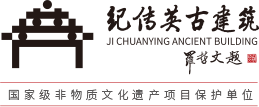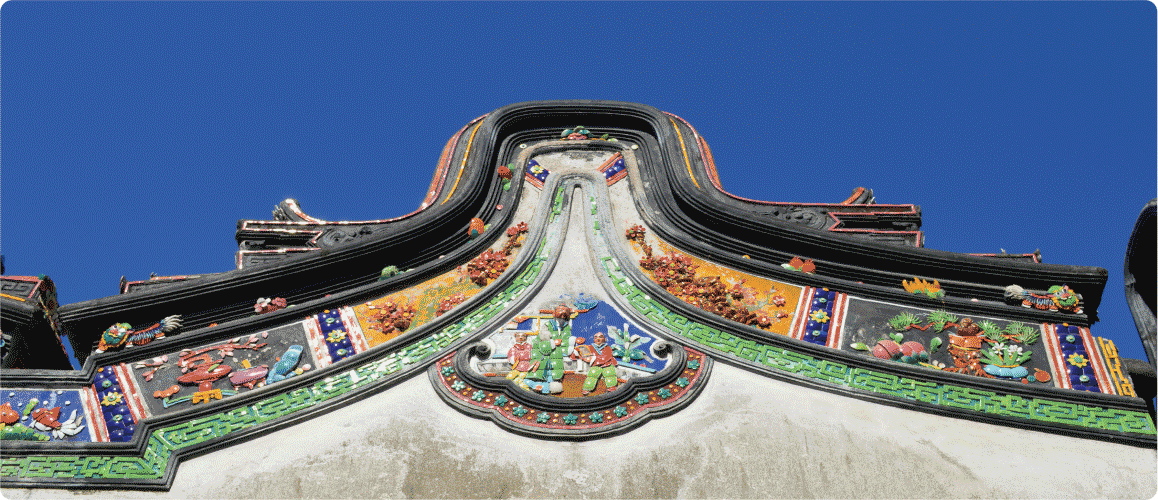All Rights Reserved © Ji Chuanying Ancient Building Construction Co.,ltd.
-
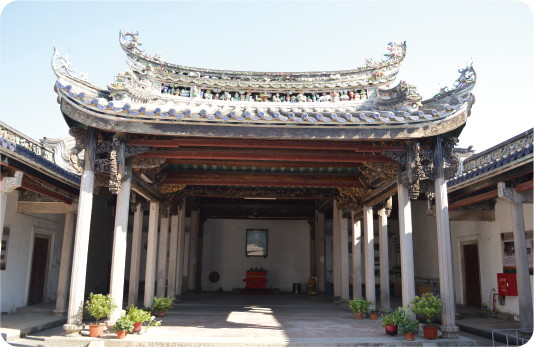 Stone and Wood StructureThe houses, ancestral halls, palaces and temples in Chaoshan area are mostly made of stone and wood. The Chaoshan area is rainy and wet. Therefore, wooden pillars are rarely used, and stone pillars are generally used. In this way, a unique structure of stone and wood is formed. Its lifting frame and the link relationship between beam and column. The overall structure is balanced with each other. Includes methods for node connection.
Stone and Wood StructureThe houses, ancestral halls, palaces and temples in Chaoshan area are mostly made of stone and wood. The Chaoshan area is rainy and wet. Therefore, wooden pillars are rarely used, and stone pillars are generally used. In this way, a unique structure of stone and wood is formed. Its lifting frame and the link relationship between beam and column. The overall structure is balanced with each other. Includes methods for node connection. -
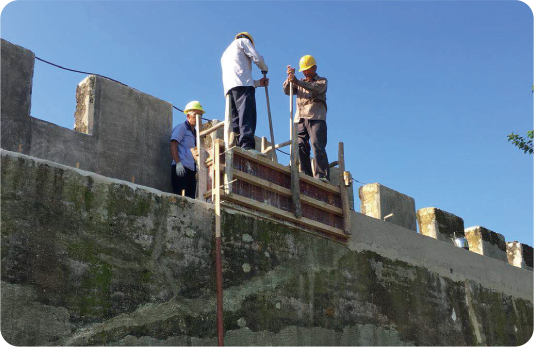 Shell Lime Sand Rammed Earth WallChaoshan shell lime-sand rammed earth walls are generally made of lime-sand soil with better viscosity and more sand, and shell ash is added in a ratio of 3:1; some are also mixed with brown sugar water and glutinous rice slurry. And, to achieve "ripening", and then, the vertical mold layered ramming. Good quality shell lime sand rammed earth walls are difficult to drive even with iron nails, and they are still intact after hundreds of years of wind and rain. <
Shell Lime Sand Rammed Earth WallChaoshan shell lime-sand rammed earth walls are generally made of lime-sand soil with better viscosity and more sand, and shell ash is added in a ratio of 3:1; some are also mixed with brown sugar water and glutinous rice slurry. And, to achieve "ripening", and then, the vertical mold layered ramming. Good quality shell lime sand rammed earth walls are difficult to drive even with iron nails, and they are still intact after hundreds of years of wind and rain. < -
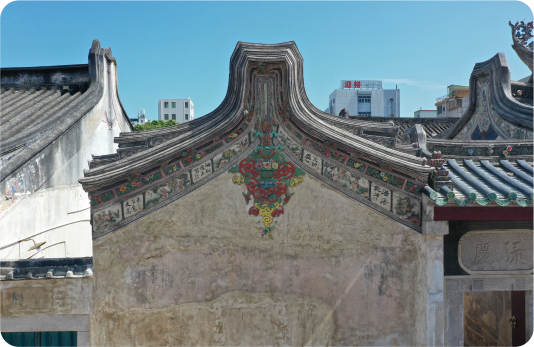 Hard Mountain Roof and Five Elements GablesThe roofs of traditional Chaoshan buildings are generally hard tops. The hard top roof is a form of "herringbone"-shaped two-slope roof. The junction of the two slopes of the roof is often paved with tiles or bricks to form a ridge. The gables on both sides are flush with the roof or slightly higher than the roof. In order to make the image of the gable more prominent , and then set vertical ridges along the gable. The "hard top" roof used in Chaoshan houses is better in wind resistance and fire resistance than the "hanging top" roof.
Hard Mountain Roof and Five Elements GablesThe roofs of traditional Chaoshan buildings are generally hard tops. The hard top roof is a form of "herringbone"-shaped two-slope roof. The junction of the two slopes of the roof is often paved with tiles or bricks to form a ridge. The gables on both sides are flush with the roof or slightly higher than the roof. In order to make the image of the gable more prominent , and then set vertical ridges along the gable. The "hard top" roof used in Chaoshan houses is better in wind resistance and fire resistance than the "hanging top" roof.Chaoshan Cuotou (called house corner) has always paid attention to the five elements, which are metal, wood, water, fire and earth.
The golden style is round and has no edges and corners; the wooden style is taller and straighter, with edges and corners; the earth style is square and flat, chunky; the fire style is a peak or triangle; the water style is a wave or a combination of three gold styles.
Later, there were improved models such as the gold-born water type and the native-born gold type. The head of the house is also related to the owner's fate, and is generally designated by the master of Feng Shui.

Gold StyleWood StyleWater StyleFire StyleEarth Style
-
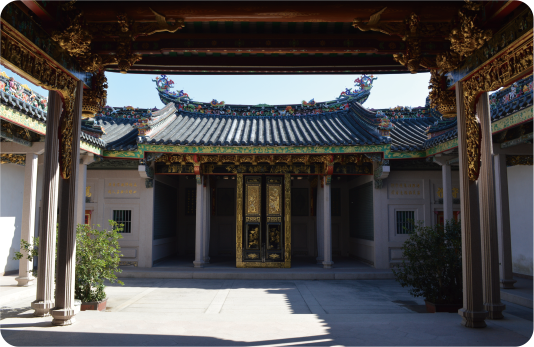 Patio and LightingChaoshan traditional buildings have the characteristics of being closed from the outside. Generally, the windows that open outward are small and few. In order to solve the problem of lighting and ventilation, most of them have patios. The function of the patio, from the perspective of Feng Shui, is to "nurture Qi", and from the perspective of architectural function, it is for lighting and ventilation, and at the same time, it provides indoor and outdoor fusion and shared space.
Patio and LightingChaoshan traditional buildings have the characteristics of being closed from the outside. Generally, the windows that open outward are small and few. In order to solve the problem of lighting and ventilation, most of them have patios. The function of the patio, from the perspective of Feng Shui, is to "nurture Qi", and from the perspective of architectural function, it is for lighting and ventilation, and at the same time, it provides indoor and outdoor fusion and shared space. -
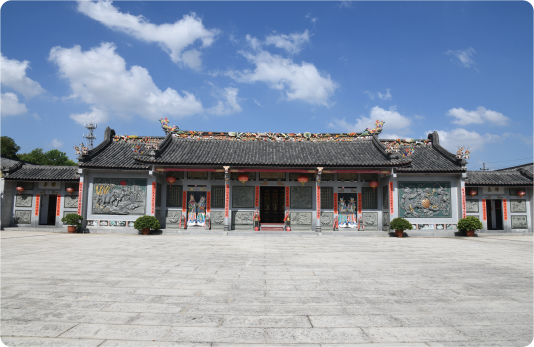 FloorChaoshan local building floor, the outer cheng of the house is mostly made of shell lime sand, and some are paved with stones in front of the gate. to make. The indoor floor is generally paved with red square bricks. The red square bricks include 1.2-foot bricks, 1.4-foot bricks, 1.6-foot bricks and 1.8-foot bricks with a thickness of 2-4 cm. The larger the size, the thicker the bricks.The laying of floor tiles has certain particulars and certain metaphors. The floor of the hall is paved in the shape of "people", which is a metaphor for popularity and prosperity; the floor of the room is paved in the shape of a dislocated "D", which is a metaphor for giving birth to a boy and adding a baby; the floor of aisles and corridors is paved in the shape of "field" , the metaphor has a field.
FloorChaoshan local building floor, the outer cheng of the house is mostly made of shell lime sand, and some are paved with stones in front of the gate. to make. The indoor floor is generally paved with red square bricks. The red square bricks include 1.2-foot bricks, 1.4-foot bricks, 1.6-foot bricks and 1.8-foot bricks with a thickness of 2-4 cm. The larger the size, the thicker the bricks.The laying of floor tiles has certain particulars and certain metaphors. The floor of the hall is paved in the shape of "people", which is a metaphor for popularity and prosperity; the floor of the room is paved in the shape of a dislocated "D", which is a metaphor for giving birth to a boy and adding a baby; the floor of aisles and corridors is paved in the shape of "field" , the metaphor has a field. -
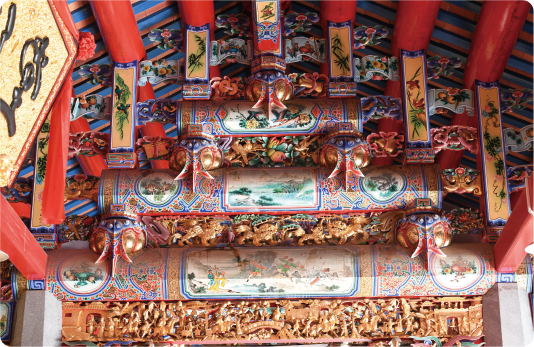 Roof Truss (Three Sets Five Papaya)"Three years and five papaya" roof truss installation is also unique to Chaoshan traditional architecture. It is a structural form in which three beams are used as replacement beams and five papayas are connected to each other. It is connected by carved components such as buckets, tubes, bent plates, phoenix crosses, and Chuwei. The roof trusses are supported by child columns (short columns). Since the Qianlong period, these child columns (short columns) have been made into exaggerated three-edged pumpkin shapes, so they are called papayas. And this beam frame structure composed of three beams (called "Zai" in Chaoshan) and five sections of papaya is called "Three Zai Five Papaya".
Roof Truss (Three Sets Five Papaya)"Three years and five papaya" roof truss installation is also unique to Chaoshan traditional architecture. It is a structural form in which three beams are used as replacement beams and five papayas are connected to each other. It is connected by carved components such as buckets, tubes, bent plates, phoenix crosses, and Chuwei. The roof trusses are supported by child columns (short columns). Since the Qianlong period, these child columns (short columns) have been made into exaggerated three-edged pumpkin shapes, so they are called papayas. And this beam frame structure composed of three beams (called "Zai" in Chaoshan) and five sections of papaya is called "Three Zai Five Papaya".
